


Ken Potter's Educational Series ...




Ken Potter's Educational Series ...

Doubling: Worthless Or Valuable?
A Collectors Guide
by Ken Potter - NLG
Click on the thumbnail image to the left to see an enlarged image of the subject. Use your browser back-arrow to return to this page.
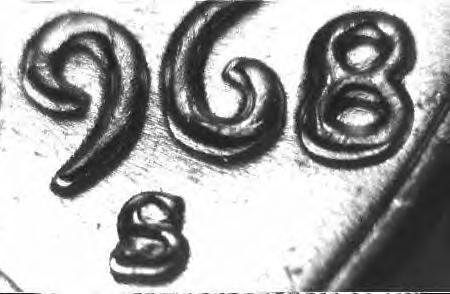 A
strong example of "Strike Doubling" (also known as "Machine Doubling
Damage" and a number of other terms) on the date of a 1968-S business strike
cent. Notice the doubling is formed by the die smashing down and flattening a
portion of the main primary image into the field.
A
strong example of "Strike Doubling" (also known as "Machine Doubling
Damage" and a number of other terms) on the date of a 1968-S business strike
cent. Notice the doubling is formed by the die smashing down and flattening a
portion of the main primary image into the field.
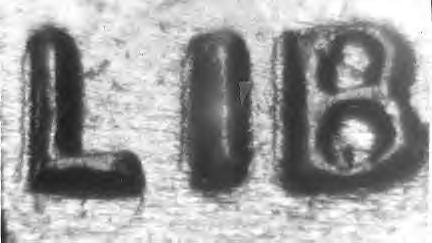 A
typical example of "Single Strike - Flat Field Doubling" (a form of "Strike
Doubling") on "LIB" of a 1970-S business strike cent. Notice that the
main primary image is undisturbed by this type of Strike Doubling.
A
typical example of "Single Strike - Flat Field Doubling" (a form of "Strike
Doubling") on "LIB" of a 1970-S business strike cent. Notice that the
main primary image is undisturbed by this type of Strike Doubling.
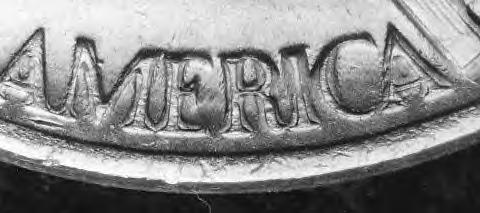 "Die
Deterioration Doubling" from worn dies on the reverse of a 1983-D Jefferson 5c.
"Die
Deterioration Doubling" from worn dies on the reverse of a 1983-D Jefferson 5c.
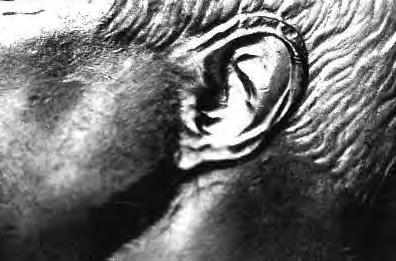 Heavy
"Strike Doubling" on the ear of a 1992-D Kennedy half.
Heavy
"Strike Doubling" on the ear of a 1992-D Kennedy half.
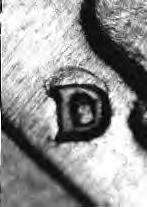 A
strong example of "Single Strike - Flat Field Doubling" on the Mint mark of a
1942-D Walking Liberty Half dollar (often confused as being a D over S because of the
"rounding effect" caused by FFD).
A
strong example of "Single Strike - Flat Field Doubling" on the Mint mark of a
1942-D Walking Liberty Half dollar (often confused as being a D over S because of the
"rounding effect" caused by FFD).
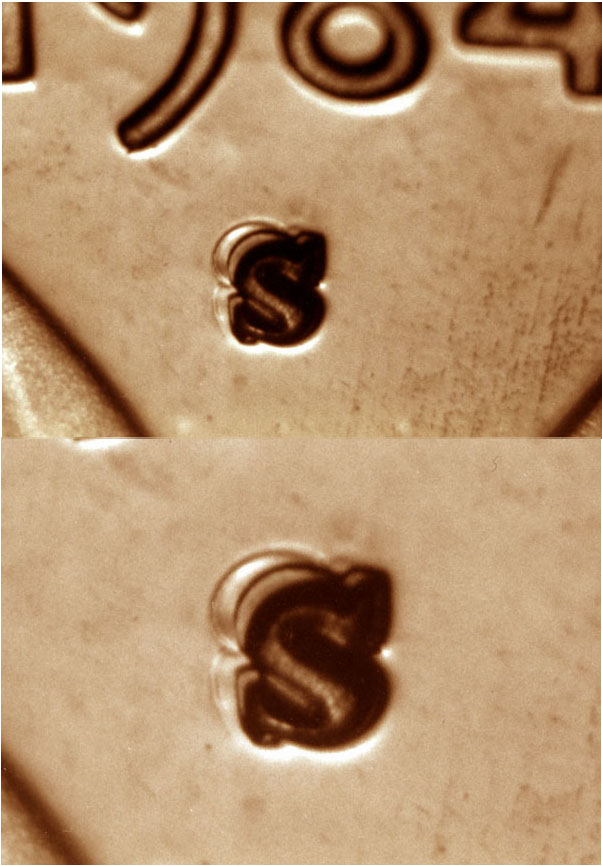 "Double
Strike - Flat Field Doubling" on the Mint mark of a 1984-S proof cent (the doubling
shows on both strikes resulting in a tripled Mint mark).
"Double
Strike - Flat Field Doubling" on the Mint mark of a 1984-S proof cent (the doubling
shows on both strikes resulting in a tripled Mint mark).
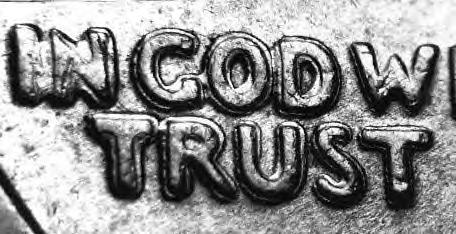 "Die
Deterioration Doubling" on the obverse a 1993-P Washington 25c.
"Die
Deterioration Doubling" on the obverse a 1993-P Washington 25c.
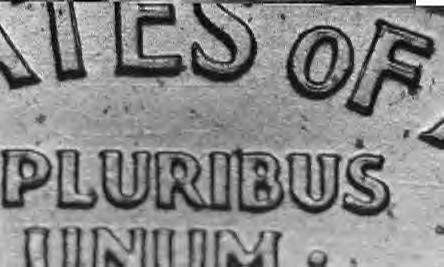 "Ejection
Doubling" on the reverse of a 1959 Lincoln cent (shows metal pushed sideways into the
lettering and then pulled upwards during ejection).
"Ejection
Doubling" on the reverse of a 1959 Lincoln cent (shows metal pushed sideways into the
lettering and then pulled upwards during ejection).
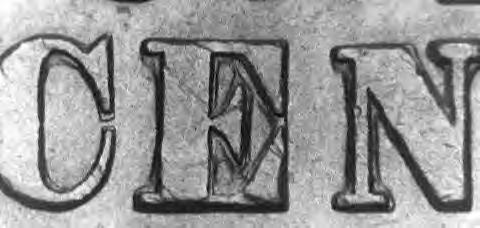 "Hob
or Punch Shoulder Outlines" on the reverse of a 1902 Indian Head cent. Often
referred to as "Longacre Doubling" though it can be found on coin designs
produced my many other designers on coins world-wide.
"Hob
or Punch Shoulder Outlines" on the reverse of a 1902 Indian Head cent. Often
referred to as "Longacre Doubling" though it can be found on coin designs
produced my many other designers on coins world-wide.
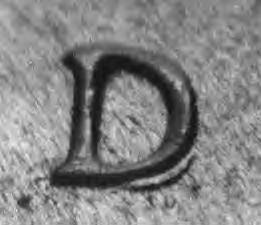 "Plating
Split Doubling" on the Mint mark of a 1993-D Lincoln cent. Very common on the
copper plated zinc cents and often mistaken for RPMs
"Plating
Split Doubling" on the Mint mark of a 1993-D Lincoln cent. Very common on the
copper plated zinc cents and often mistaken for RPMs
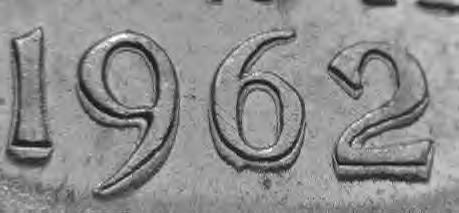 Canadian
1962 5c exhibiting heavy die deterioration doubling as frequently seen on chromium plated
dies that have had the plating wear out in the area of greatest stress (in this case - the
edges of design where metal flows around corners into the cavities). Photo by KP.
Canadian
1962 5c exhibiting heavy die deterioration doubling as frequently seen on chromium plated
dies that have had the plating wear out in the area of greatest stress (in this case - the
edges of design where metal flows around corners into the cavities). Photo by KP.
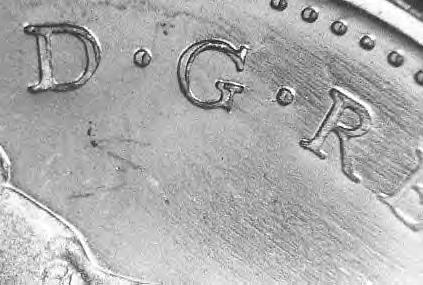 Canadian
1965 10c exhibiting "strike doubling" (machine doubling damage). Photo by Alan
Herbert.
Canadian
1965 10c exhibiting "strike doubling" (machine doubling damage). Photo by Alan
Herbert.
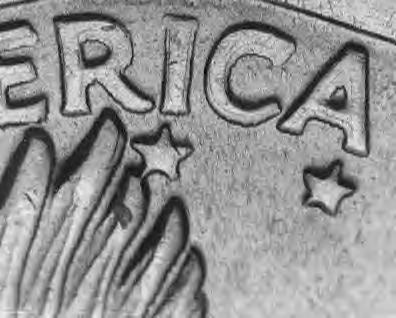 Susan
B. Anthony dollar showing die deterioration doubling on reverse lettering. Photo by J.T.
Stanton.
Susan
B. Anthony dollar showing die deterioration doubling on reverse lettering. Photo by J.T.
Stanton.
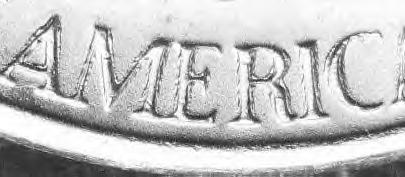 1981-P
Jefferson 5c with die deterioration showing on reverse. Photo by J.T. Stanton.
1981-P
Jefferson 5c with die deterioration showing on reverse. Photo by J.T. Stanton.
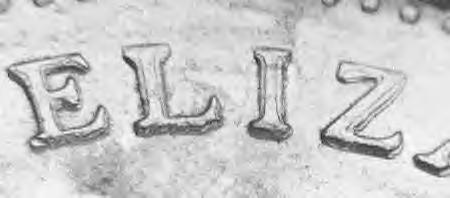 Canadian
1967 5c exhibiting die deterioration doubling and some light strike doubling. Coin
courtesy of Karen Rusto. Photo by KP.
Canadian
1967 5c exhibiting die deterioration doubling and some light strike doubling. Coin
courtesy of Karen Rusto. Photo by KP.
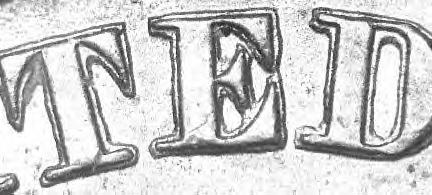 Hob or
Punch Shoulder Outlines (so-called "Longacre's Doubling") on the reverse of an
1880 1c. Common on many denominations and coinages of the era, world-wide. Certainly not
restricted to James B. Longacre's work. Photo by Alan Herbert.
Hob or
Punch Shoulder Outlines (so-called "Longacre's Doubling") on the reverse of an
1880 1c. Common on many denominations and coinages of the era, world-wide. Certainly not
restricted to James B. Longacre's work. Photo by Alan Herbert.
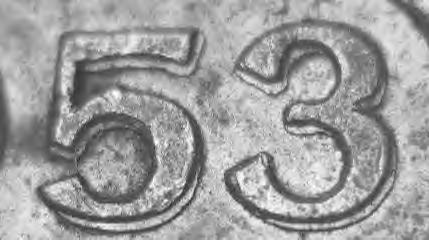 Canadian
1953 1c displaying "strike doubling" (also known as "machine
doubling"). Photo by KP.
Canadian
1953 1c displaying "strike doubling" (also known as "machine
doubling"). Photo by KP.
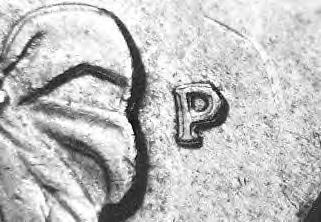 Die
deterioration doubling on the Mint mark of a 1993-P 25c (see Series-1 for doubling of IGWT
on this coin). Photo by KP.
Die
deterioration doubling on the Mint mark of a 1993-P 25c (see Series-1 for doubling of IGWT
on this coin). Photo by KP.
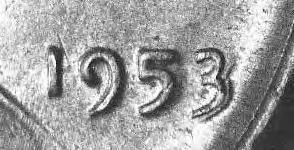 1953 1c
with die deterioration doubling evident on the date; esp. on the 3. Often incorrectly
referred to as "polish doubling" or "abrasion doubling". Photo by
Susan Sisti.
1953 1c
with die deterioration doubling evident on the date; esp. on the 3. Often incorrectly
referred to as "polish doubling" or "abrasion doubling". Photo by
Susan Sisti.
All images produced by Ken Potter are © Ken Potter 1992-2003. Reproduction for
non-profit, educational purposes granted but credits must be extended to the
photographers.
While this list is not comprehensive, some of the most collectable forms of doubling
are represented in the photos and descriptions below. You will notice they all involve the
re-entry of a design into the die (through one manufacturing method or another) that
results in one image overlapping onto the other. Each image is a entity of its own and not
dependant on an earlier image from which to be formed or "smashed down" from,
etc. In many cases you will note distinct areas of separation between the images even if
only in the finer details such as the serifs of characters. Study the photos below and
compare them to the "Other Forms of Doubling" to learn the difference.
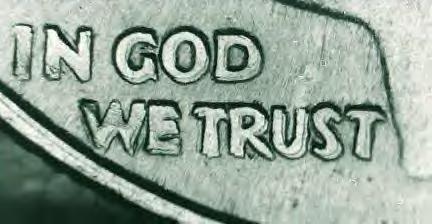 Nice
hub doubling showing on IGWT of a 1946 Roosevelt dime. Coin courtesy of W. W. Edwards who
first reported discovering the variety back in the mid 1970s.
Nice
hub doubling showing on IGWT of a 1946 Roosevelt dime. Coin courtesy of W. W. Edwards who
first reported discovering the variety back in the mid 1970s.
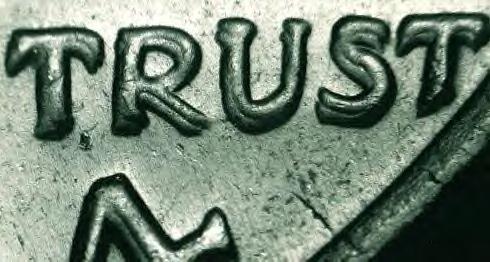 An
outstanding example of hub doubling on TRUST found on a 1974-D half dollar. Notice the
strong spread and areas of distinct separation.
An
outstanding example of hub doubling on TRUST found on a 1974-D half dollar. Notice the
strong spread and areas of distinct separation.
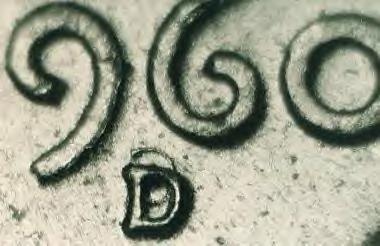 One of
my favorite Repunched Mint Mark varieties on a 1960-D Large Date cent. Listed as RPM#13.
One of
my favorite Repunched Mint Mark varieties on a 1960-D Large Date cent. Listed as RPM#13.
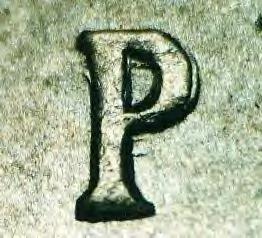 A nice
example of a quadruple punched Mint mark on a 1945-P Jefferson war-time nickel. Notice the
trace of the lower loop down to the south of the main lower loop and other areas of
doubling with separation of images. Coin courtesy of Jerome Goodman. Listed as RPM#45.
A nice
example of a quadruple punched Mint mark on a 1945-P Jefferson war-time nickel. Notice the
trace of the lower loop down to the south of the main lower loop and other areas of
doubling with separation of images. Coin courtesy of Jerome Goodman. Listed as RPM#45.
 Here's a
great example of a Repunched Date on an 1882 Indian Head cent showing as an 88/88 with the
tops of the secondary 8s found within the upper loops of the main characters. Coin
courtesy of Larry Briggs.
Here's a
great example of a Repunched Date on an 1882 Indian Head cent showing as an 88/88 with the
tops of the secondary 8s found within the upper loops of the main characters. Coin
courtesy of Larry Briggs.
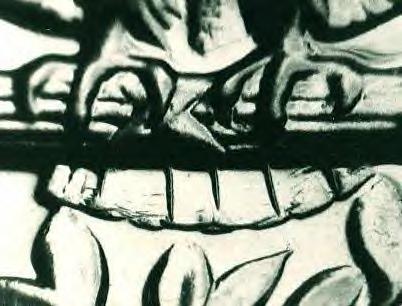 A rare
example of "Touch-up Engraving Doubling" on the eagle's tail-feathers on a 1953
proof Washington quarter. Notice that the original feathers were polished down so far that
they virtually disappeared. They were crudely re-entered into the die as a series of new
tail-feather outlines with distinct overlapping of the old and the new tail-feather
outlines most easily viewed at the lower edge. Coin courtesy of Cliff Bolling.
A rare
example of "Touch-up Engraving Doubling" on the eagle's tail-feathers on a 1953
proof Washington quarter. Notice that the original feathers were polished down so far that
they virtually disappeared. They were crudely re-entered into the die as a series of new
tail-feather outlines with distinct overlapping of the old and the new tail-feather
outlines most easily viewed at the lower edge. Coin courtesy of Cliff Bolling.
All photos by Ken Potter. © Ken Potter 1992-2003.
For more information on this item click below:
Send email to: KPotter256@aol.com



Numismatist Since 1959 ~ Serving
the Collector Since 1973
CONECA's Longest Serving Doubled Die Attributer
Member of: ANA CONECA-LM NLG NCADD-FM
MSNS-LM
NWDCC RCC COINMASTERS LCS WBCC BBCC
Free counters provided by Andale.
Unless otherwise stated, all Photographic Images are by Ken
Potter. Copyright Ken Potter, 1993, 1994, 1995, 1996, 1997, 1998, 1999, 2000, 2001,
2002. Use of images in any manner is strictly prohibited without the express written
permission of the copyright holder.